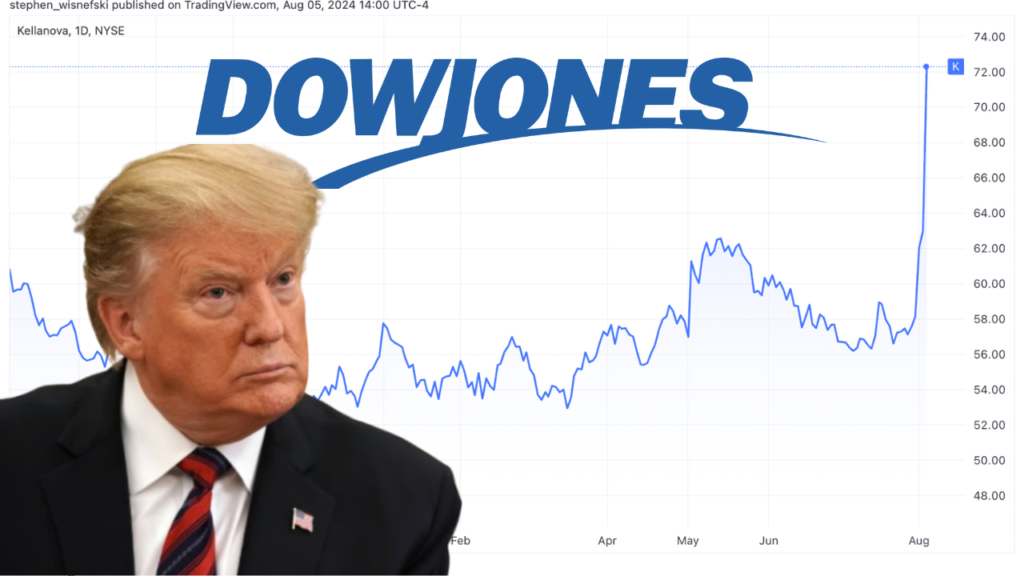On Friday, May 23, 2025, U.S. stock futures experienced a sharp and unsettling decline, reacting to former President Donald Trump’s latest tariff threats aimed squarely at the European Union (EU) and tech giant Apple Inc. The financial markets were rattled by the surprise announcement, which many analysts believe could further strain global trade relations and undermine investor confidence. Specifically, futures for the Dow Jones Industrial Average slipped by 1.4%, while the broader S&P 500 declined 1.5%, and the tech-heavy Nasdaq 100 posted a significant 1.85% drop. These figures underscore the market’s sensitivity to geopolitical tensions, especially those involving major trade powers.

Trump’s newly proposed tariffs include a 25% import duty on Apple products not manufactured in the United States and a steep 50% tariff on goods imported from the European Union, effective June 1. The move marks a stark escalation in protectionist rhetoric, targeting not only an entire economic bloc but also an individual U.S. corporation—a first in modern trade policy. Trump justified these proposals by pointing to what he described as “unfair” trade practices by the EU and Apple’s increasing reliance on offshore manufacturing, particularly in India.
Stock Futures Slide as Trump Threatens EU
- Date of Incident: May 23, 2025
- Market Impact: Dow Jones (-1.4%), S&P 500 (-1.5%), Nasdaq 100 (-1.85%)
- Trigger Event: Trump’s announcement of tariffs on EU goods and Apple products
- Stock Specific Reaction: Apple shares fell by more than 3%
- Tech Sector Impact: Declines also seen in Palantir, Nvidia, and other major tech stocks
- Global Ripple Effects: France’s CAC 40 declined by 1.8%
- Official Reference Source: Investor’s Business Daily
Understanding the Announcement: What Happened and Why It Matters
President Trump’s decision to focus on Apple Inc.—a symbol of American innovation and economic strength—was driven by the company’s growing pivot to overseas manufacturing hubs like India, in efforts to diversify away from Chinese suppliers. While this strategic move was largely viewed as risk mitigation, Trump sees it as a blow to American industry. He claims that such corporate behavior undermines domestic job creation and weakens the U.S. economic foundation.
The 50% tariff on EU goods, meanwhile, stems from years of friction between the U.S. and European Union over trade imbalances, regulatory differences, and agricultural subsidies. Trump argues that the EU has consistently failed to engage in fair and reciprocal trade practices, necessitating a more aggressive approach.
Together, these policy shifts signal a return to protectionist strategies that could significantly alter the trajectory of global trade. Investors are concerned not only about the direct financial implications but also the broader geopolitical instability such measures could introduce.
Market Reactions: A Global Response
Markets did not take the news lightly. Within hours of the announcement:
- Apple Inc. (AAPL) shares fell over 3%, reflecting market fears about disrupted supply chains and increased production costs.
- The Nasdaq 100, heavily populated by tech firms, suffered the most, dropping nearly 1.85%.
- Palantir (PLTR) and Nvidia (NVDA) joined the downward trend as investor concerns spread across the entire tech sector.
- France’s CAC 40 dropped by 1.8%, underscoring how deeply integrated financial markets are across the Atlantic.
According to a report by AP News, the sudden drop in global markets reflects fears of disrupted business operations and the re-emergence of trade barriers.
The Bigger Picture: Economic Implications
1. Consequences for Apple and the Broader Tech Sector
The proposed 25% tariff would impact a significant portion of Apple’s product line, potentially increasing prices for consumers and putting pressure on profit margins. Apple’s complex supply chain—stretching across China, India, and other parts of Asia—could face serious delays and cost overruns. More critically, this sets a precedent for singling out individual companies, which may discourage innovation and global expansion.
2. Risks in EU-U.S. Trade Relations
The proposed 50% tariff on EU goods could:
- Dampen European exports to the U.S.
- Prompt retaliatory tariffs from the EU, targeting American cars, tech products, and agricultural exports.
- Further complicate post-Brexit trade arrangements.
- Slow down multilateral cooperation on climate change, cybersecurity, and global security.
3. Investor Confidence and Market Stability
Abrupt policy shifts contribute to market volatility and undermine investor confidence. The unpredictable nature of these announcements makes it difficult for:
- Businesses to plan their capital expenditures.
- Investors to make long-term commitments.
- Pension funds and retirement accounts to maintain stable returns.
Stock Futures Slide as Trump Threatens EU: How to Guide Strategic Advice for Investors?
Uncertainty creates opportunity—but only for those who are prepared. Here’s a more comprehensive strategy to navigate this evolving landscape:
Step 1: Embrace Diversification
Invest across multiple sectors and regions. Exposure to international markets, bonds, commodities, and real estate can help cushion against unexpected downturns in any one area.
Step 2: Monitor Developments Actively
Set up news alerts and stay connected to trusted outlets like The Guardian, Investor’s Business Daily, and AP News for fast updates and expert analysis.
Step 3: Rebalance with Safe-Haven Assets
Gold, U.S. Treasuries, and utilities stocks are traditional safe havens during market volatility. Consider moving a portion of your portfolio into these less risky assets while markets remain unsettled.
Step 4: Seek Professional Guidance
Regular consultations with a certified financial planner or wealth manager can help realign your portfolio to withstand shocks and capture long-term gains.
Conclusion
The market downturn on May 23, 2025, driven by Donald Trump’s tariff threats, marks a pivotal moment in global economic relations. The targeting of both an economic bloc and a major corporation sends a strong signal about the possible direction of future U.S. trade policy. As the global economy becomes increasingly interconnected, such unilateral actions could lead to prolonged uncertainty and widespread disruption. For investors and professionals alike, the key takeaway is to stay informed, diversified, and prepared to adapt.
FAQs on Stock Futures Slide as Trump Threatens EU
What exactly did Trump propose?
He proposed a 25% tariff on all Apple products manufactured outside the U.S. and a 50% tariff on imports from the European Union, to take effect on June 1, 2025.
Are these tariffs already in effect?
Not yet. They are proposals as of now, but the market is reacting as though they could be enforced imminently.
How is this different from previous trade wars?
This is the first instance of a U.S. President proposing tariffs specifically targeting a single American company. It also reflects a more unilateral, sudden approach compared to prior, more negotiated trade spats.
Should I sell my tech stocks now?
That depends on your financial goals and risk tolerance. Consider consulting with a financial advisor before making any hasty decisions.
Will this impact consumer electronics prices?
Very likely. If tariffs are implemented, the added cost may be passed down to consumers through higher prices on iPhones, iPads, and other gadgets.









No Comments Yet
Be the first to share your thoughts.
Leave a Comment